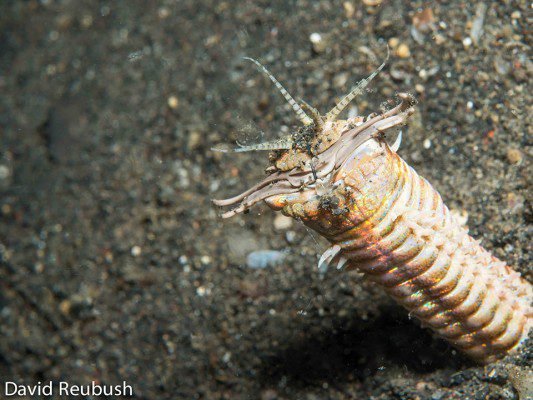
So, how do these remarkable worms sense motion in the water? They rely on a combination of specialized sensory organs and their environment. Just like how a chef uses a good knife to prepare delicious food, bobbit worms use their adaptations to thrive in their underwater homes. Let’s dive deeper and explore their fascinating motion detection skills and what makes them such effective hunters.
Understanding Bobbit Worms
Bobbit worms, scientifically known as *Eunice aphroditois*, are sea-dwelling creatures that can reach lengths of up to ten feet. They’re named after the infamous Lorena Bobbitt due to their ability to strike swiftly and with precision. Found mostly in tropical and subtropical waters, these worms burrow into the ocean floor, keeping most of their body hidden while they wait for unsuspecting prey to swim by.
When discussing bobbit worms, it’s essential to appreciate their unique adaptations. Their segmented bodies are equipped with bristles, and their heads feature two long, antenna-like structures called palps. These not only help with navigation but are also crucial for detecting motion in the water column.
How Motion Detection Works
Here’s the thing about motion detection in bobbit worms: it’s all about their incredible sensory capabilities. They use a combination of mechanoreceptors and chemoreceptors to sense changes in their surroundings.
– **Mechanoreceptors**: These specialized sensory cells are extremely sensitive to vibrations in the water. When something moves nearby, it creates ripples and currents that bobbit worms can detect. Imagine how a tightrope walker senses the slightest wobble in the rope; that’s how finely tuned their senses are.
– **Chemoreceptors**: These receptors allow the worms to detect chemical signals in the water, which can indicate the presence of food or potential threats. If a fish is swimming nearby or if there are specific chemicals released by distressed prey, the bobbit worm can pick up on those hints.
Together, these systems give bobbit worms a perfect hunting advantage.
Vibrations in the Water
Imagine a calm lake on a sunny day. Now picture a fish suddenly darting through the water. The ripples and vibrations created by the fish are something that bobbit worms can easily sense. They can pick up on even the slightest movements, allowing them to react swiftly.
When a potential meal swims within striking distance, the bobbit worm can launch a surprise attack with lightning speed. This motion detection system is so finely tuned that it allows the worm to thrive in its environment, even if it’s mostly hidden from sight.
Hunting Techniques
So, how do bobbit worms actually put their motion-detection capabilities to use? When a meal is sensed, they don’t just swim towards it. Instead, they employ some clever techniques to catch their prey.
– **Ambush Hunting**: Bobbit worms often wait patiently in their burrows, with only their head and palps exposed. When they detect movement, they strike with exceptional speed. The worm darts out, using its powerful jaws to grasp its prey before it even knows what happened. It’s like a trapdoor spider waiting for a fly to land nearby.
– **Chemical Cues**: Sometimes, bobbit worms rely on chemoreception to identify food. If a fish or shrimp releases substances into the water while swimming, the worm can detect these chemicals and react accordingly. This helps them locate meals that may not be visible due to their camouflage.
Why Motion Detection Matters
Understanding how bobbit worms detect motion is more than just a fun fact; it highlights the intricate balance of marine ecosystems. By being effective hunters, these worms play a vital role in controlling prey populations, ultimately contributing to the health of their habitat.
When bobbit worms thrive, it indicates a healthy, balanced ecosystem where predator and prey interact. If these worms struggle due to environmental changes, it can be a sign of larger problems within the marine environment. So, knowing about their motion detection is essential for understanding the dynamics of ocean life.
The Impact of Habitat Changes
With everything happening in our oceans today, such as pollution and climate change, it’s crucial to consider how these factors might affect bobbit worms. Changes in water temperature, salinity, and pollution can impact their ability to detect motion effectively. A decrease in their hunting success can lead to imbalances in the ecosystem.
You might be wondering what this means for other marine life. As top predators in their environment, bobbit worms help maintain the populations of various species. If their numbers dwindle, it could lead to overpopulation of their prey. This cascading effect can disrupt the entire marine food web.
Final Thoughts
Bobbit worms are truly fascinating creatures that demonstrate the wonders of nature. Their ability to detect motion in the water column is a remarkable adaptation that highlights the intricate relationship within marine ecosystems. By understanding how they sense their environment, we can gain insight into the importance of biodiversity and the delicate balance of life in our oceans.
Just like the bobbit worm has its unique way of thriving, each creature in the ocean contributes to the broader ecosystem. So next time you think about underwater life, remember the bobbit worm and its incredible skills. They may not be the most glamorous creatures, but their role is essential, and that makes them pretty amazing in their own right.
